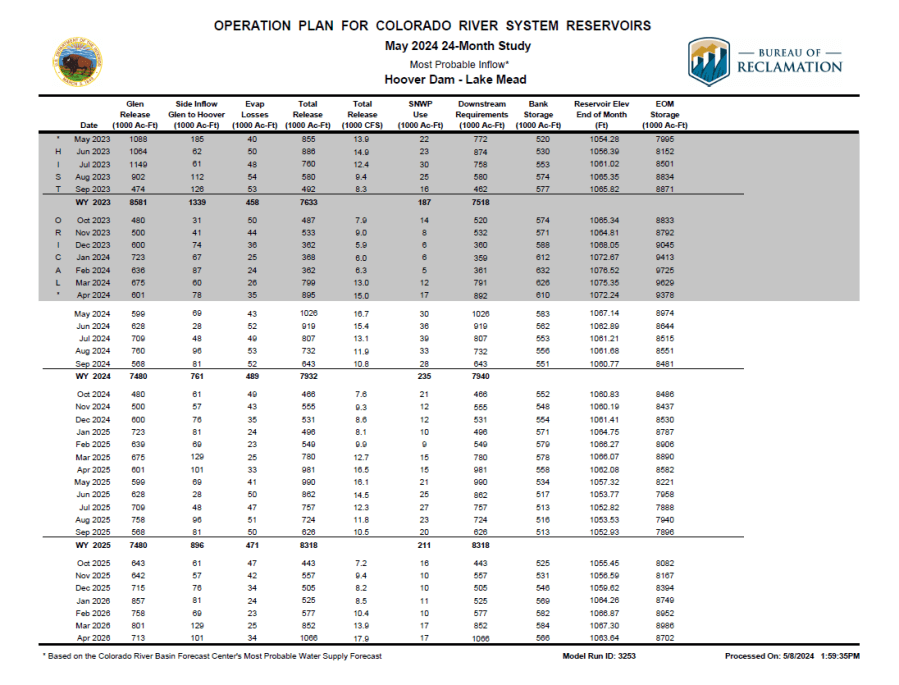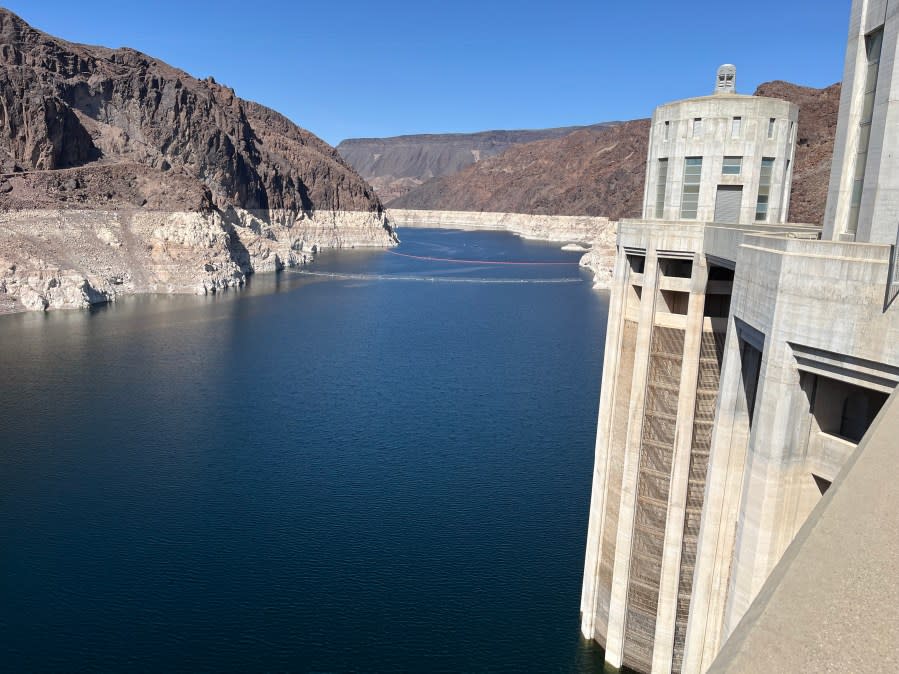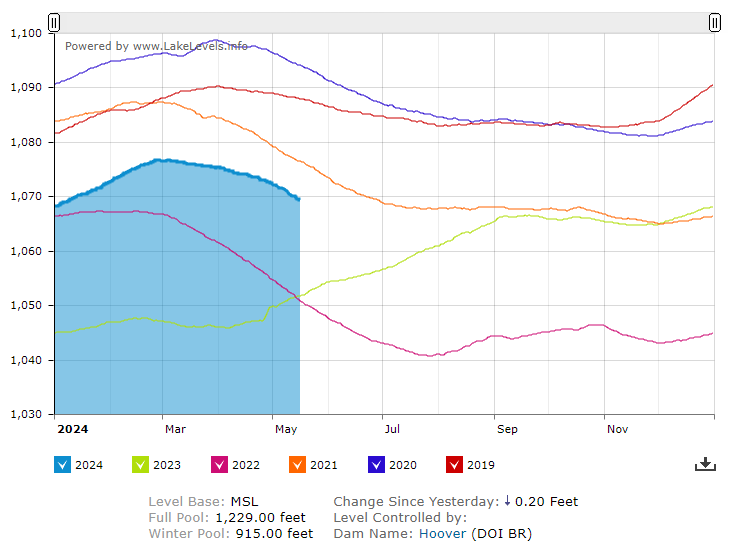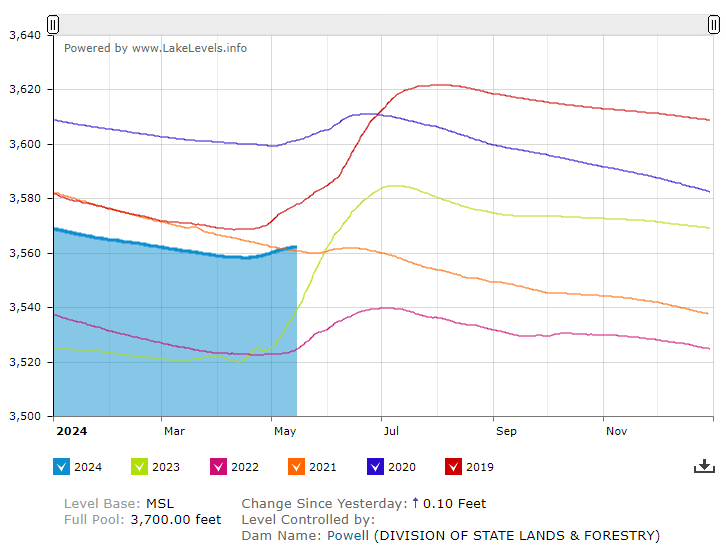Lake Mead outlook improves in latest water projections

LAS VEGAS (KLAS) — The water picture for Las Vegas is a little brighter in projections released this week by the U.S. Bureau of Reclamation.
It will take a year to get there, but Lake Mead is expected to be 4 feet deeper in May 2024 than projections released just a month ago. Where is that water coming from?
Big swings in lake levels that came in past years — the product of extremely dry years followed by a very wet winter last year — appear to be stabilizing this year. The 24-month study shows Lake Mead won’t return to March 2024’s peak (1,076.66 feet) in the next two years. But it also won’t drop below 1,050 feet.

That’s a pretty big change from the outlook in April, when the 24-month study showed Lake Mead dropping as low as 1,048.24 feet and staying under 1,050 for a four-month stretch beginning in June 2025.

If the new projections prove correct, Las Vegas will remain in a Tier 1 water shortage for the next two years. But — as the differences between the April and May projections show — that could change.
The studies are released monthly and show a range of possibilities for water levels at the reservoirs along the Colorado River. While the numbers cited above are for the “most probable inflow,” Reclamation also produces reports on the maximum and minimum inflow projections. If Lake Mead got only the minimum amount of Colorado River water, Las Vegas could be in Tier 2 water shortage restrictions as soon as June of 2025. On the other hand, maximum inflow would take the lake closer to levels at the start of the extremely dry year of 2021.

A look at projections for Lake Powell shows that Reclamation has adjusted estimates downward there by 4 to 5½ feet beginning in June. River Operations Manager Noe Santos described a net decrease of about 600,000 acre feet coming into Lake Powell, an amount greater than the Colorado River water used in Nevada over a three-year period.
Conservation measures in the Lower Colorado River Basin — Nevada, Arizona and California — were cited as the reason new projections show Lake Mead at higher levels, according to Santos.
Both Lake Mead, the largest reservoir in the U.S., and Lake Powell, the second-largest, have stabilized somewhat thanks to last year’s heavy snow in the Upper Colorado River Basin, primarily in the Colorado Rockies.
Lake Mead

Current conditions show Lake Mead at 1,069.41 feet as of noon today, with new projections showing the lake dropping to 1,060.19 feet by the end of November. The 16-foot projected drop from the lake’s peak in March is about 2 feet less than previous projections.
Lake Powell

At Lake Powell, the reservoir is at 3,562.26 feet, about a month into an expected rise on the strength of seasonal runoff. Projections show Lake Powell will rise 21 feet (a total of 25 feet from its April low point) to peak at 3,583.26 in June.
Lake levels are expressed as altitudes, measuring the number of feet above sea level to the lake’s surface.
Snowpack reached 111% of normal on April 1, and reached its peak about 10 days later. Since then, late-season storms have improved the water picture even more. Although snow water equivalent (SWE) levels are on the decline, they are better compared to seasonal averages. The Bureau of Reclamation reported Thursday that SWE is currently at 125% of median levels.
Copyright 2024 Nexstar Media, Inc. All rights reserved. This material may not be published, broadcast, rewritten, or redistributed.
For the latest news, weather, sports, and streaming video, head to KLAS.

